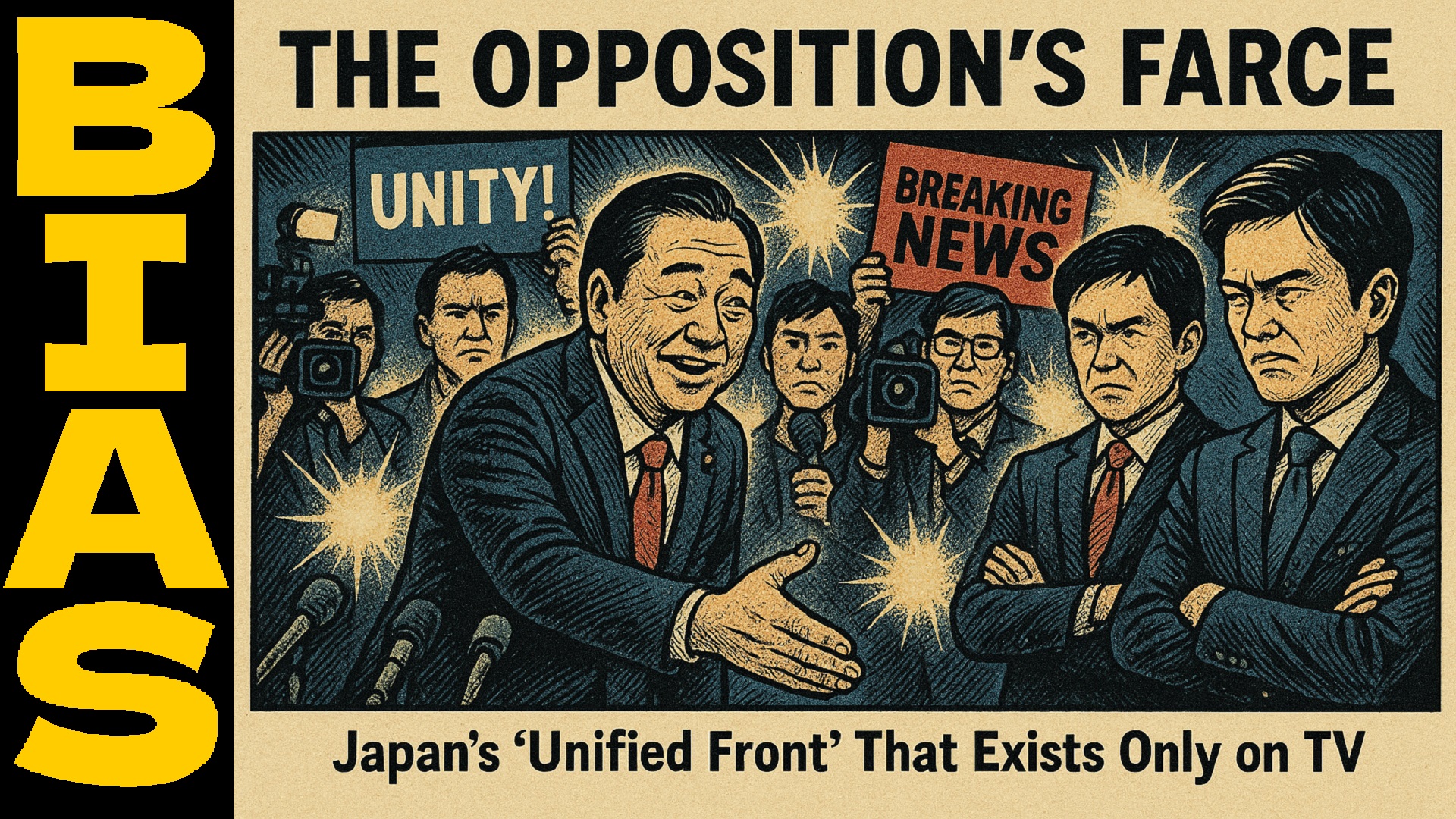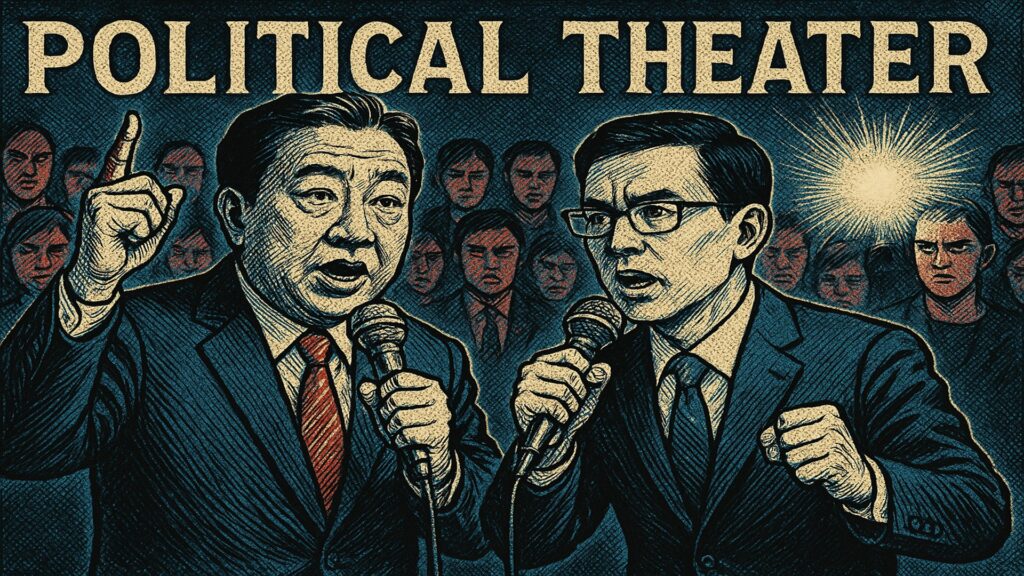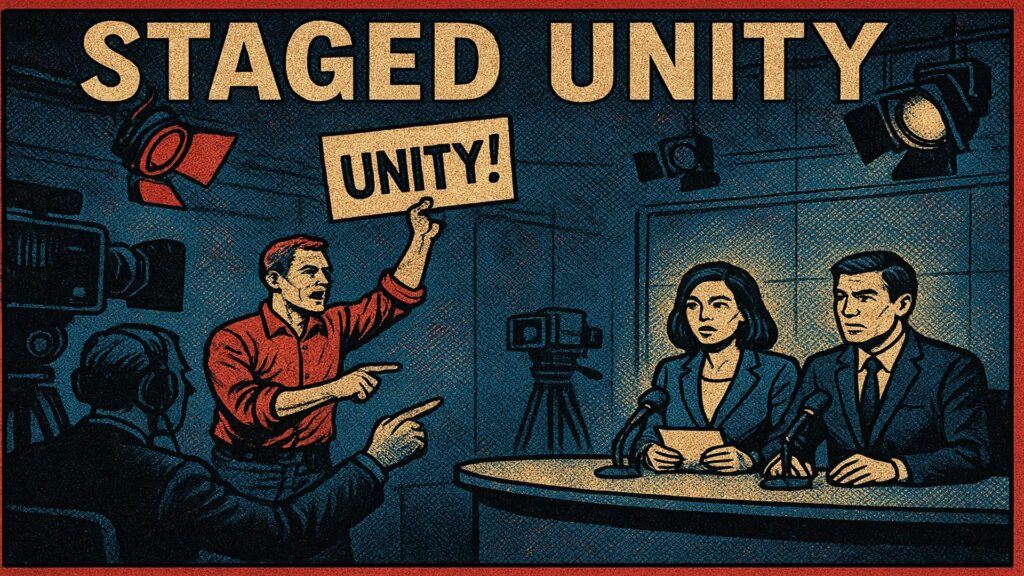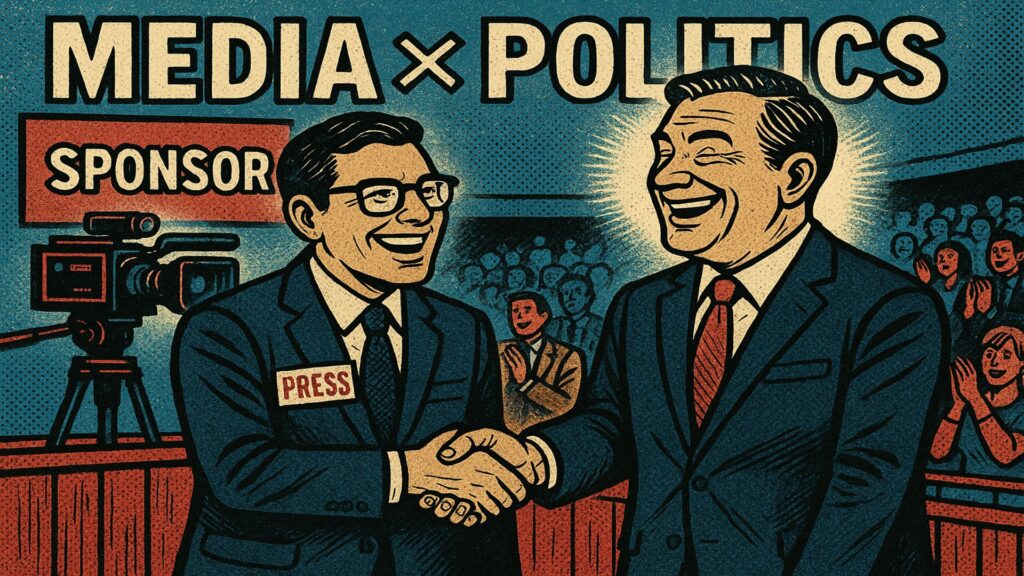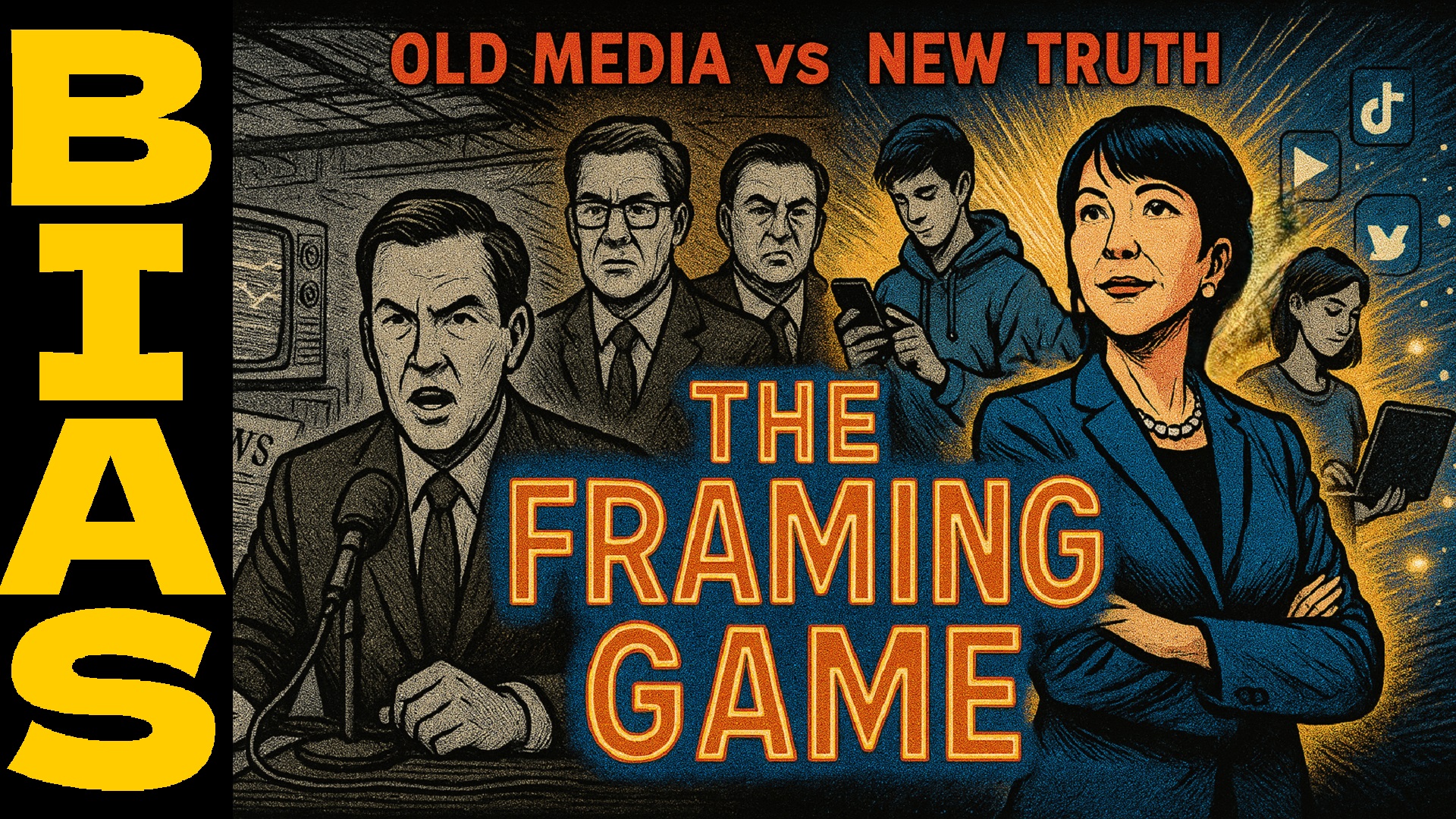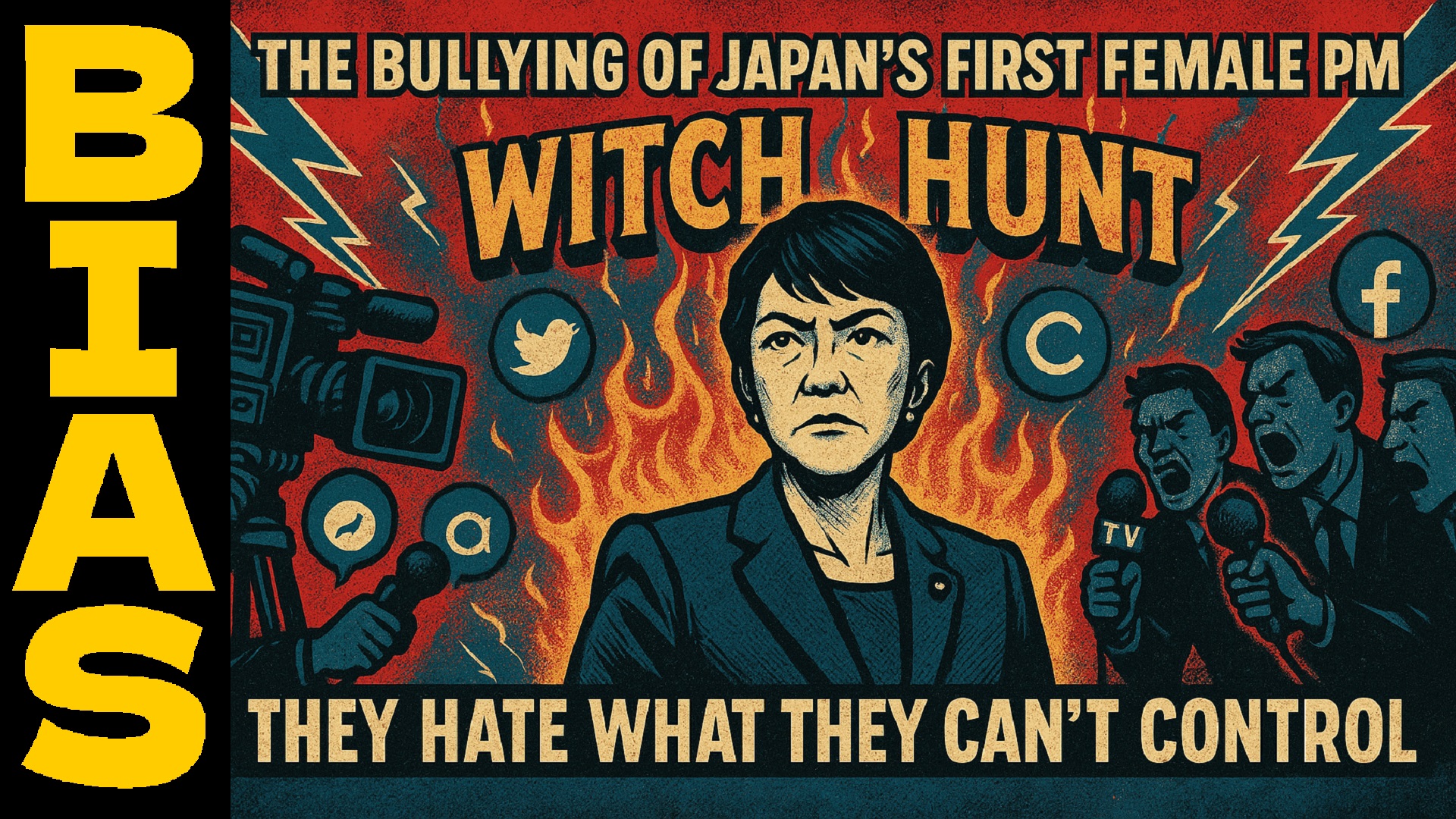Open any Japanese news site lately, and you’ll be greeted with headlines like “Opposition United!” or “Power Shift Possible in PM Vote!”
Hard not to laugh, isn’t it? Former Prime Minister Yoshihiko Noda of the Constitutional Democratic Party (CDP) reaches out for cooperation—but both Yuichiro Tamaki of the Democratic Party for the People and Hirofumi Yoshimura of Nippon Ishin say a firm “No.”
Still, the media eagerly frames it as “historic collaboration,” cameras flashing as reporters narrate this “moment of unity.”
The reality is more of a political theater than a turning point. As the CDP overplays its hand, the others keep their distance. And yet, voters might almost believe this overproduced narrative. In Japan’s news cycle, drama sells better than accuracy—and this time, the show’s called “The United Opposition.”
- 😂 The Prime Minister Vote Is Just Arithmetic
- 😁 The “Unity Mood” Is a Manufactured Illusion
- 😍 “Looks Possible” Means “Profitable”
- 🤪 The CDP’s Passion—Pointed in the Wrong Direction
- 🤔 Media and Opposition: A Symbiotic Relationship
- 😴 The “Moderate Bias” of Japan’s Newsrooms
- 😟 Conclusion: Less Theater, More Policy
😂 The Prime Minister Vote Is Just Arithmetic
Here’s the basic fact TV pundits never admit: the prime ministerial selection isn’t a public vote. It’s a closed-door parliamentary count. Lawmakers simply write names on paper, and the math decides the winner.
But the media treats it like a national referendum—complete with exit polls and tension music. Anyone who can count party seats already knows who will win. The journalists know it too.
Still, “Takaichi in Trouble!” or “Opposition Surge!” makes for better clicks. The fuel isn’t truth—it’s traffic. And once you realize that, the spectacle becomes almost comical.
😁 The “Unity Mood” Is a Manufactured Illusion
In reality, Ishin and the DPP have shown little interest in any formal coalition. At best, they’ve said they might “listen to talks.” Yet those vague phrases are blown up into “Alliance in Sight!”
It’s the oldest trick in the newsroom: inflate a maybe into a headline.
Speculative reporting fills airtime; the illusion of progress keeps viewers watching. The problem? The numbers never add up.
Even if CDP, Ishin, and DPP joined hands, they’d still lack the votes. They’d need Komeito—or even the Communists or Reiwa—to reach a majority. None of those scenarios are remotely realistic.
So why push the fantasy? Because hope, even a false one, drives engagement. In this script, facts play a supporting role.
😍 “Looks Possible” Means “Profitable”
Why keep saying “It might happen”? Because it clicks.
Even zero-credibility stories attract readers if they sound like insider whispers: “Talks continue,” “Sources say progress.” Add an unnamed “party insider,” and the drama writes itself.
Meanwhile, the opposition parties can barely agree on tax policy, let alone power-sharing. The gaps are ideological and personal.
Yet, journalists persist with “What if?” because “what if” gets shared.
It’s political fan fiction, written by networks that know better.
And the audience? Still watching the rerun, hoping this time it ends differently.
🤪 The CDP’s Passion—Pointed in the Wrong Direction
CDP leaders like Azumi and Noda are tirelessly calling for unity. Admirable effort—but misplaced.
Where was that passion when proposing credible policy or reform bills?
Instead of leading in parliament, they’re performing for cameras.
It’s politics as a cosplay of governance—criticize, posture, repeat.
Remaining in opposition means zero accountability and steady media airtime.
It’s comfortable politics: power without responsibility.
The irony? The louder they shout about “change,” the less they seem to offer it.
🤔 Media and Opposition: A Symbiotic Relationship
Let’s be honest: Japan’s media and the opposition feed off each other.
The media needs drama to fill airtime; the opposition needs coverage to stay relevant.
When one floats “cooperation,” both win.
The media gains clicks and ad revenue. The opposition regains visibility.
Voters, meanwhile, are treated as spectators—clapping when prompted.
This ecosystem rewards illusion over results.
And everyone involved knows it.
😴 The “Moderate Bias” of Japan’s Newsrooms
Japan’s major outlets love moderation—at least their version of it.
They spotlight the CDP, Ishin, and DPP as “responsible alternatives,” while labeling the Communists or Reiwa as “too extreme.”
Social Democrats? Often invisible.
Stories featuring “realistic centrists” play well with advertisers and middle-class viewers.
Reports often cite anonymous CDP sources, turning selective leaks into “the voice of the opposition.”
By contrast, the skepticism or caution from other parties is buried.
The result is a curated narrative where “respectable opposition” means “safe for broadcast.”
The truth doesn’t need to be exciting—unless your revenue depends on it.
😟 Conclusion: Less Theater, More Policy
How long will we waste airtime on fantasies of a “united opposition government”?
Instead of rehearsing impossible coalitions, Japan’s opposition could focus on tangible policy proposals and governance competence.
The political reality is simple: parties only ally when mutual policy gains outweigh the risks.
DPP and Ishin avoid the CDP not out of spite, but calculation—the alliance would cost them seats.
If they see more deliverables under a Takaichi-led LDP, they’ll cooperate bill by bill, not through slogans.
Until the CDP defines what it can actually deliver, “unity” will remain a headline, not a plan.
In the end, what Japan needs isn’t coalitions against the ruling party—but competition for better policy outcomes.
The news should report that—not who plays which role in the next act of this long-running political comedy.


